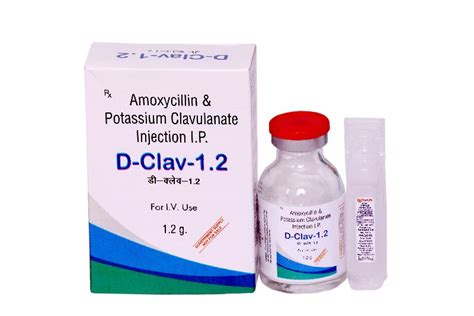Intro
Discover key facts about Amox-Clav, a potent antibiotic combining amoxicillin and clavulanate, used to treat bacterial infections, respiratory issues, and more, with insights into its uses, side effects, and interactions.
The importance of understanding antibiotics cannot be overstated, especially when it comes to medications like Amox-Clav. This combination antibiotic is widely used to treat a variety of bacterial infections, and its effectiveness has made it a staple in many medical treatments. However, like all medications, it's crucial to approach its use with a thorough understanding of its benefits, potential side effects, and the proper ways to take it. As we delve into the world of Amox-Clav, it becomes clear that there's more to this antibiotic than meets the eye.
Amox-Clav, short for Amoxicillin-Clavulanate, is a combination of two active ingredients: amoxicillin, a penicillin-type antibiotic, and clavulanate, a beta-lactamase inhibitor. This combination is designed to combat bacteria that have developed resistance to amoxicillin alone, making it a powerful tool against a broader range of infections. The unique blend of these two components not only enhances the antibiotic's effectiveness but also helps in reducing the development of drug-resistant bacteria. This aspect of Amox-Clav highlights the ongoing battle between medical science and evolving bacterial strains.
The use of Amox-Clav spans across various infections, including those of the respiratory tract, skin, and urinary tract. Its broad-spectrum activity means it can target a wide array of bacteria, making it a versatile option for healthcare providers. Moreover, the combination of amoxicillin and clavulanate has been shown to improve patient outcomes in certain infections by ensuring that the antibiotic reaches effective concentrations in the body to fight off the invading bacteria. Understanding the appropriate use of Amox-Clav and its potential interactions with other medications is vital for maximizing its benefits while minimizing risks.
Introduction to Amox-Clav

How Amox-Clav Works
The mechanism of action of Amox-Clav involves the inhibition of cell wall synthesis in bacteria, which is essential for the bacteria's survival and multiplication. Amoxicillin interferes with the synthesis of the bacterial cell wall, while clavulanate blocks the action of beta-lactamases, enzymes produced by some bacteria that can inactivate amoxicillin. By combining these two drugs, Amox-Clav can effectively target and eliminate a wide range of bacteria, including those that have developed resistance mechanisms against other antibiotics.Benefits of Using Amox-Clav

Common Uses of Amox-Clav
Amox-Clav is commonly prescribed for the treatment of community-acquired pneumonia, acute bacterial sinusitis, acute otitis media, skin and skin structure infections, and urinary tract infections. Its use is determined by the severity of the infection, the suspected or confirmed causative bacteria, and the patient's medical history, including any allergies or previous experiences with antibiotics.Potential Side Effects of Amox-Clav

Precautions and Warnings
Patients with a history of allergy to penicillins or other beta-lactam antibiotics should use Amox-Clav with caution, as cross-reactivity can occur. Additionally, patients with renal impairment may require dose adjustments, and those with hepatic dysfunction should be monitored closely due to the potential for increased toxicity. Pregnant women and breastfeeding mothers should only use Amox-Clav under the guidance of a healthcare provider, weighing the potential benefits against the risks to the fetus or infant.Interactions with Other Medications

Dosage and Administration
The dosage of Amox-Clav varies based on the infection being treated, the patient's age, weight, and renal function. It's typically administered orally, with or without food, and the duration of treatment depends on the type and severity of the infection. Patients should complete the full course of treatment as directed by their healthcare provider, even if symptoms improve before finishing the medication, to ensure that the infection is fully cleared and to reduce the development of antibiotic resistance.Resistance and Future Directions

Conclusion and Recommendations
In conclusion, Amox-Clav is a valuable antibiotic for treating a range of bacterial infections. Its efficacy, combined with its relatively favorable safety profile, makes it a commonly prescribed medication. However, the potential for side effects and the risk of contributing to antibiotic resistance mean that its use must be judicious and guided by healthcare professionals. Patients should be aware of the benefits and risks of Amox-Clav, adhere to the prescribed treatment regimen, and report any concerns or side effects to their healthcare provider promptly.Final Thoughts on Amox-Clav

Call to Action
We invite readers to share their thoughts and experiences with Amox-Clav, and to engage in discussions about the responsible use of antibiotics. By sharing knowledge and promoting awareness, we can contribute to a healthier community and help in the ongoing effort to combat antibiotic resistance. Whether you're a healthcare professional, a patient, or simply someone interested in learning more about antibiotics, your voice matters in this conversation.What is Amox-Clav used for?
+Amox-Clav is used to treat a variety of bacterial infections, including respiratory tract infections, skin and skin structure infections, and urinary tract infections.
How does Amox-Clav work?
+Amox-Clav works by inhibiting the synthesis of the bacterial cell wall, thereby stopping the growth of bacteria. The clavulanate component protects amoxicillin from degradation by beta-lactamase enzymes produced by some bacteria.
What are the common side effects of Amox-Clav?
+Common side effects of Amox-Clav include diarrhea, nausea, vomiting, and rash. More severe side effects can include severe allergic reactions, liver damage, and C. diff infection.
